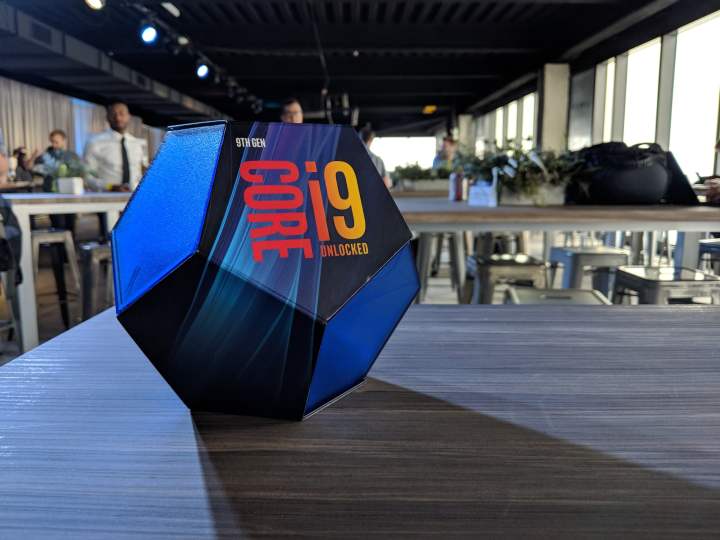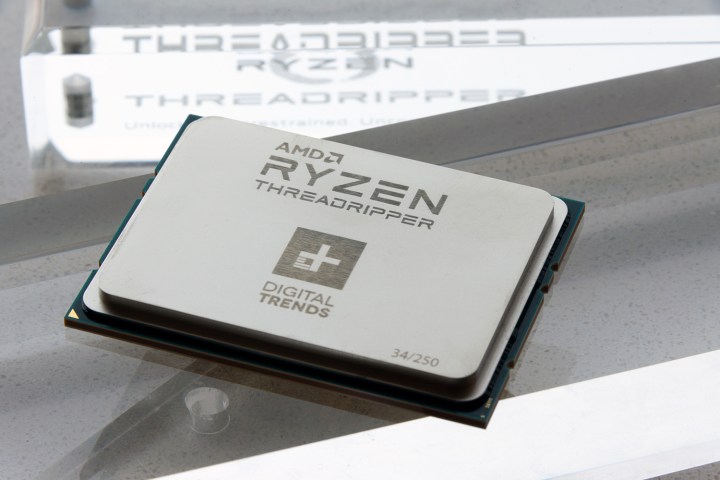
The release of AMD’s Threadripper chips changed the face of high-end CPUs forever. Not only did they provide the first competition Intel has had at the top end for years, but they introduced some of the highest cores counts we’ve ever seen on single CPU configurations that aren’t specifically targeted at servers. They aren’t typically aimed exclusively at gamers either, but if you’re looking for power beyond AMD’s $300 2700X, Threadripper is your best bet.
Or it would be if Intel didn’t have some fantastically powerful Core i9 CPUs to go head-to-head with AMD. From extreme edition CPUs with up to 18 cores for big multi-threaded loads, to high-end gaming chips like the 9900K, Intel’s line up is equally worthy of your time if you’re looking for a big CPU upgrade.
Productivity

Some tasks, like video encoding or image editing, can see a real benefit from masses of processor cores. That’s where some of the more extreme CPUs can really come into play. Chips like the Intel 7980XE with its 18 cores, absolutely demolish more conservative core count chips like the 9900K, and if an application can handle its ludicrous core count, the 2990WX can pull ahead significantly over even the Intel competition.
That isn’t always the case though, as some applications simply don’t know what to do with the 64 threads that the 2990WX puts out. In some cases, comparable performance can be achieved with much more affordable CPUs in the range, like the 2950X. In applications which favor individual core power over a larger multitude of threads, comparably priced Intel CPUs can pull ahead instead. While we weren’t able to test it against the second-generation Ryzen chips, the 9900K demolished last year’s Threadrippers in our Handbrake video encoding test.
What about gaming?

We said these chips aren’t really designed with gaming in mind, and while that’s true, it doesn’t mean they’re terrible at it either. Because modern games rely much more heavily on the system’s GPU, a 32-core processor might not make as big an impact on gameplay as you might assume.
There is a reason that all of the top 3DMark Time Spy Extreme results utilize CPUs from Intel and AMD that cost thousands of dollars: Because they’re amazingly powerful. That’s not necessarily a perfect comparison for gaming scenarios, though. Out of all of the Core i9 and Threadripper CPUs, we would recommend the Intel Core i9-9900K over all of the others for your extreme gaming needs, as it performed far better than the competition in our testing. In CPU-heavier games like Civilization VI, the 9900K outperformed processors with much higher core counts.
It’s not that the other chips in the series can’t game, they just aren’t really worth the extra cost.
Efficiency
If you look at a detailed specification table of the Intel’s Core i9 CPUs and AMD’s Threadripper CPUs side by side, you’ll see a lot of numbers. Those numbers tend to be higher on the Threadripper side of things, and that’s typically a good thing. More cores, more clocks mean more power. But power is the important word here, as the Threadripper CPUs need more power to run than their Intel counterparts. For example, the Core i9-9900K’s TDP is only a 95-watts. It can require as much as 210w when running on all threads, however.
The most power hunger of Intel’s CPUs have a thermal design profile of 165 watts, and the somewhat entry-level options like the 7900X and 7920X require just 140 watts. Threadripper on the other hand, pulls a lot more. The first-generation required 180 watts across the board and the second-generation 2920X and 2950X demand the same. The top-tier 2970WX and 2990WX however, have a TDP of 250 watts. That means big power draw and big cooling requirements.
Pricing

As is quite typical of the AMD versus Intel debate throughout the last decade or so, AMD CPUs are the most cost-effective and that same scenario plays out much the same even at this extreme end of the spectrum. First-generation Threadripper CPUs can be had for between $320 and $600, while the second-generation varies between $650 and $1,800 — though the more budget-conscious 2920X and 2970WX have yet to be made widely available at the time of writing.
In comparison, Intel’s 9900K might have a reasonable (although still expensive compared to more mainstream CPUs) price of $530, but the more extreme Intel CPUs are far more costly. The entry-level 7900X still costs $900 a year and a half after it was released, and the 7980XE, with fewer cores and lower clocks than its Threadripper counterpart, is $2,050.
Prices are a little lower for the planned Intel refresh later this year, maxing out at $1,980 for the 9980XE, but no firm release date for those chips has yet been announced.
It’s also worth mentioning that Threadripper’s TR4 socket design will be used in all upcoming motherboard generations until at least 2020, meaning CPU upgrades won’t require a new motherboard too. Intel is doing the same for the refresh of its Core i9 7000 CPUs, but the 9900K requires a new motherboard and its successor will do as well.
Pay for what you need
All of the top-of-the-line CPUs from AMD and Intel are amazing pieces of hardware. They have performance and specifications that almost nobody needs, but for those that do, there are some takeaways from our comparison that are worth taking note of. In certain applications that can take full advantage of the extra cores AMD’s Threadripper chips offer, they have a big advantage over even Intel’s best.
In many applications that isn’t the case though. These chips aren’t designed with everyone in mind. There’s a reason our guide to the best CPUs looks more at the mid-range than anything else.
Even within the realm of high-end users, the top Threadripper and Core i9 CPUs cost close to $2,000 each, so aren’t typically recommended for anyone but the most extreme of cases. In terms of cost, AMD chips do tend to be much more affordable and that goes doubly so if you’re looking at first-generation Threadripper CPUs which massively undercut their counterparts in Intel’s Core i9 lineup. They do require more power though, so factor that into your long-term cost projections.
If you’re looking to game only, the Core i9-9900K is the only CPU here really worth recommending as the others don’t offer enough of a performance improvement (if at all in some cases) for the added cost to be worth it.




